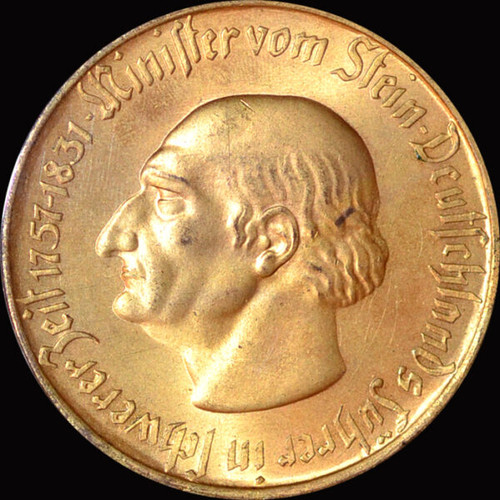Why add this 1923 10,000 Mark Notgeld Coin of Germany’s Weimar Republic to your collection?
Notgeld was a form of “emergency” or “necessary” money produced in Germany and Austria in the form of banknotes or coinage. The currency was minted not by the government, but by independent town savings banks, municipalities, and even privately owned institutions, when adequate state issued monies were not available. Following the end of the First World War, the region of Germany was known as the Weimar Republic, 1919-1933; an era wrought with economic crisis. Inflation in the Republic escalated in 1923 to a period of hyperinflation. The central bank was unable to keep up with demand for currency, resulting in the widespread production of high denomination Notgeld, such as this bronze coin issued by the province of Westphalia. The coin carries a face value of 10,000 Marks, measures 44.5 mm in diameter and weighs approximately 32 grams.
Design of the Westphalia Notgeld Coin
The obverse features the likeness of Prime Minister Heinrich Karl Baron vom Stein, Prussian statesman, reformer and unifier (1757-1831), surrounded by the inscription “1757-1831 MINISTER VON STEIN DEUTSCHLANDS FURHER IN ICHFERER ZEIT” (Germany’s leader through harder times).
The white horse from the Westphalian coat of arms is depicted on the reverse, accompanied by the inscriptions “Notgeld der Provinz Westfalen,” “1923” and “10000 Mark.”
This 10,000 Mark Notgeld Coin struck in 1923 for circulation within the province of Westphalia belongs in your collection! Add this artifact from the period of Weimar Republic hyperinflation to your cart now!










